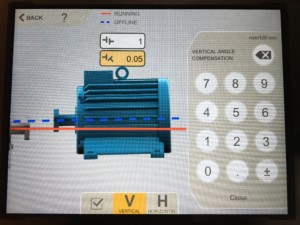
A brief discussion on plant loss analysis by George Williams.
[Read more…]Your Reliability Engineering Professional Development Site
A listing in reverse chronological order of these article series:
by George Williams Leave a Comment
by Robert (Bob) J. Latino Leave a Comment

Trick question, it’s neither!
When we hear people use the term ‘error’ it is normally associated with being the cause of some type of bad outcome. We hear it all the time with airline accidents where they conclude ‘pilot error’.
‘Error’ is neither the cause nor the undesirable outcome! Let’s see why.
Is the only type of error a ‘human error’? I struggled to think of an ‘error’ that is not a human error, so I asked if others could think of something else. I would like to thank Dr. Peter Elias who commented that errors can occur in biologic processes, such as RNA and DNA replication or messaging. He also cited non-human animals make errors all the time as well.
by James Kovacevic Leave a Comment
 A major asset is being installed, and the asset is vital to the success of a brand new, high-profit product being introduced to the site. This product is enough to keep the site operational for many years to come. The installation of the asset is critical, and there is extensive prep work to eliminate soft foot, ensuring the base is flat (using geometric measurement) and that the asset is aligned properly.
A major asset is being installed, and the asset is vital to the success of a brand new, high-profit product being introduced to the site. This product is enough to keep the site operational for many years to come. The installation of the asset is critical, and there is extensive prep work to eliminate soft foot, ensuring the base is flat (using geometric measurement) and that the asset is aligned properly.
[Read more…]
by James Reyes-Picknell Leave a Comment

There are two things you must do in a successful maintenance program: be good at doing your work, and only do the right work. Both are needed to deliver asset reliability – the cornerstone of sustainable, safe and quality production levels. In chasing reliability many turn to programs for defining the right work, yet many of those efforts will fail. Why? Poor or ineffective planning. The greatest benefits come from defining the right maintenance program using RCM and then implementing with quality work and on schedule.
Failure of reliability improvement programs can be from poor execution of RCM, but more often it is the result of something more basic. They are stuck in a culture of unreliability. [Read more…]
by George Williams Leave a Comment

In all the years of facilitating RCFA, what seems like the easiest part has proven to be one of the most challenging. Documenting the problem statement. It is human nature is to immediately develop an opinion and provide a solution. When a group of people are put in a room together for an RCFA they immediately believe they are there to solve THE problem. This leads to a focus on solutions to the event as it occurred. The team gathers in the room and the facilitator asks what the problem statement is, and the replies tell it all. “Jane, the operator, hit the wrong button.” “The technician didn’t know how to install the bearing.” “Poor lubrication.” Sound familiar?
[Read more…]by Robert (Bob) J. Latino Leave a Comment

If you’ve ever led a Root Cause Analysis (RCA) Team, you will relate to this article. Being an effective RCA analyst is tough work in the healthcare (HC) industry. It is fraught with administrative, technical and political hurdles that continually erode our will to be effective, in spite of these barriers. However, for those ‘driven’ analysts, they just rise to the challenge and find a way to go over or through these often mental barriers, because the end game is the patient’s safety and it is worth it!
by James Kovacevic Leave a Comment
 As the kids go back to school, maintenance, reliability, and asset management professional resume their professional learning. This learning usually takes place at one of the numerous world-class conferences available across North America and internationally. These conferences allow professionals to observe and connect with the latest tools, technology, and techniques in our amazing profession.
As the kids go back to school, maintenance, reliability, and asset management professional resume their professional learning. This learning usually takes place at one of the numerous world-class conferences available across North America and internationally. These conferences allow professionals to observe and connect with the latest tools, technology, and techniques in our amazing profession.
Sometimes it is difficult for the maintenance, reliability, and asset management professionals to get the approval or funding to attend the conference. Some organizations look at these events as a week of vacation, where there is little to no value from attending the conference. Changing this perception is not an easy task, but can be started by having an intention for the conference.
[Read more…]
by James Reyes-Picknell Leave a Comment

Reliability depends on the right maintenance being done the right way, and at the right times. At the core of making that happen is the work management process. It is a six step process that’s fairly simple, but often not followed very well. Without, workforce deployment becomes reactive to emergencies and maintenance costs are high. Work done in those reactive situations is anywhere from 1.5 to 3 times as expensive as work that is fully planned and executed on schedule. In some industries the cost of emergency work is even higher. [Read more…]
by Joe Anderson Leave a Comment

In order to get a broad, clear picture of where to focus, you have to view your whole plant as a large system of fully manageable processes. No matter your role, your job is to improve plant processes, helping to produce the highest quality product, at the lowest price possible, in the safest manner. In order to see this big picture, you have to be honest and expose true problems within your facility. From that perspective, you will be able to recognize the different types of losses in your plant and how to secure significant gains in productivity by controlling those losses.
[Read more…]by Robert (Bob) J. Latino Leave a Comment

As long as humans are involved in running our organizations, there will be holes (vulnerabilities) in our cheese. This is why I state that we will never have American cheese (no holes) representing our safety systems, because this would imply they would be failsafe and not impenetrable.
by James Kovacevic Leave a Comment
 The first step to any reliability improvement program is to define what data or information will be required to drive defect elimination. In the previous posts, the following topics were discussed;
The first step to any reliability improvement program is to define what data or information will be required to drive defect elimination. In the previous posts, the following topics were discussed;
All of the topics discussed what data is required and how to structure the data to implement a reliability engineering program or defect elimination process. Understanding the what, when and why set up and is required to setup a reliability engineering program. However, where many organization fail in this process is getting the data collected in a consistent and timely manner. [Read more…]
by James Reyes-Picknell Leave a Comment

All organizations are made up of individuals. Invariably they reflect each other – the organization reflects the choices of its people, and vice versa. For any organization to thrive and achieve, so too must its people. Without them you’re dead. [Read more…]
by Nancy Regan Leave a Comment

Protective Devices are important for our equipment and for our own safety. My guest, Miles, shows us a real-world Protective Device and explains how it could prevent disaster. Reliability Centered Maintenance (RCM) gives us powerful tools to decide how to maintain Protective Devices so they are ready to protect us in the event things go wrong. [Read more…]
by James Kovacevic Leave a Comment
 As maintenance, reliability, and asset management professionals, we are in an amazing time. We can collect virtually limitless amounts of data on the condition of our assets. With this data, we can determine the exact condition of the assets, predict when the next failure is likely to occur and how it will occur. Besides, with all of this data, we can move to prescriptive maintenance, where the maintenance actions are determined based on the asset condition, not a predetermined strategy. I’ll touch more on prescriptive maintenance in next week’s post. [Read more…]
As maintenance, reliability, and asset management professionals, we are in an amazing time. We can collect virtually limitless amounts of data on the condition of our assets. With this data, we can determine the exact condition of the assets, predict when the next failure is likely to occur and how it will occur. Besides, with all of this data, we can move to prescriptive maintenance, where the maintenance actions are determined based on the asset condition, not a predetermined strategy. I’ll touch more on prescriptive maintenance in next week’s post. [Read more…]
by James Reyes-Picknell Leave a Comment

Reliable operations are far less expensive to maintain and operate and they produce more consistently. Yet most industrial operations are far from achieving high reliability. Getting there will require effort and that effort goes well beyond the maintenance department alone. They will need to change from reactive, break it then fix it thinking and un-informed cost-cutting measures that undermine reliability. They will need leadership, not management. Leadership is all about making change and taking your organization in new directions. It will be disruptive, or it won’t be much of a change. Leaders are the ones who rock the boat, managers will keep it stable. In choosing excellence you’ll be choosing a path of constant change and improvement. Leadership is needed – it’s about strategy, effective execution, and it’s about your people – without whom you will accomplish very little. If you want excellence, it begins with leadership. [Read more…]